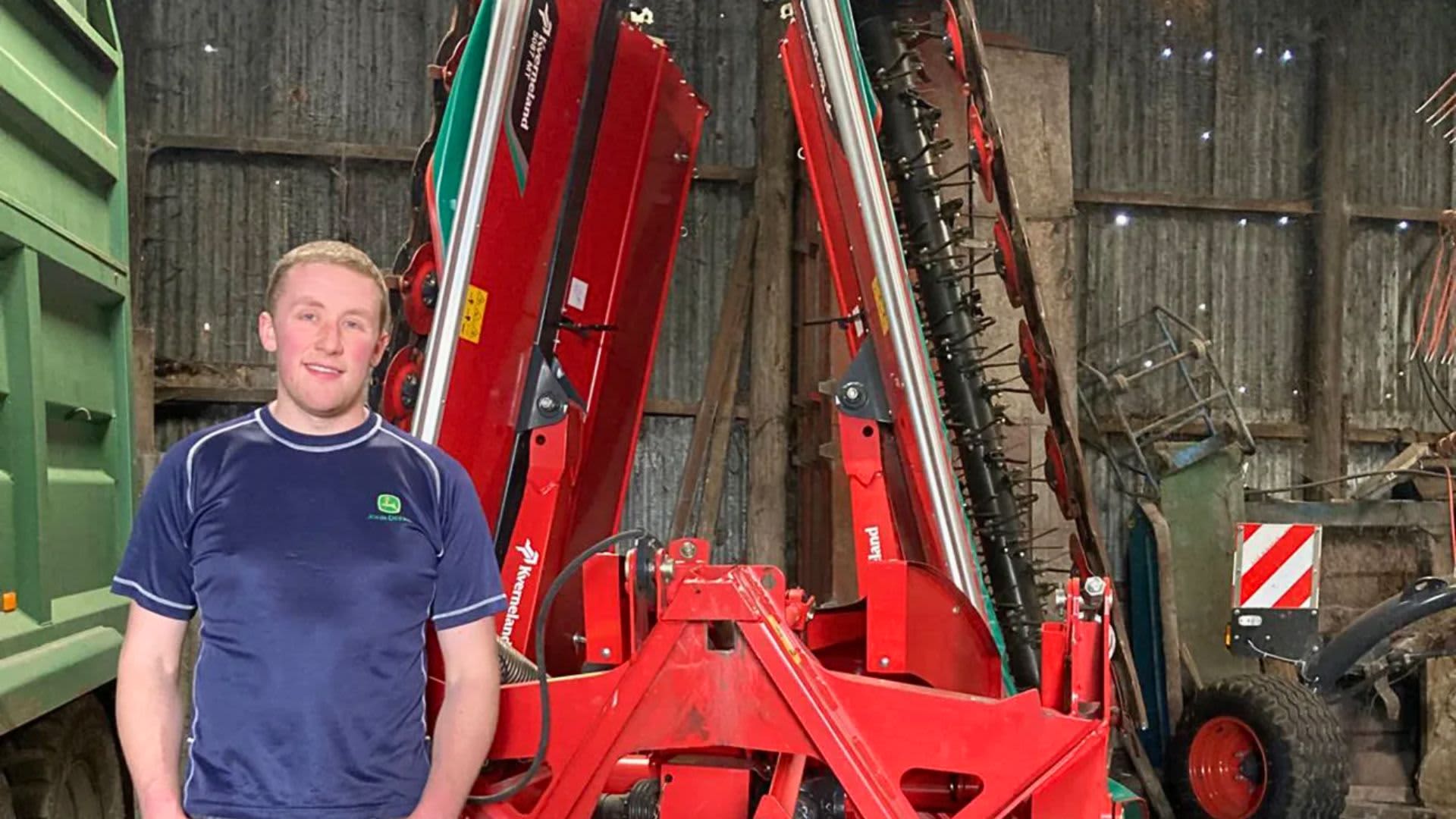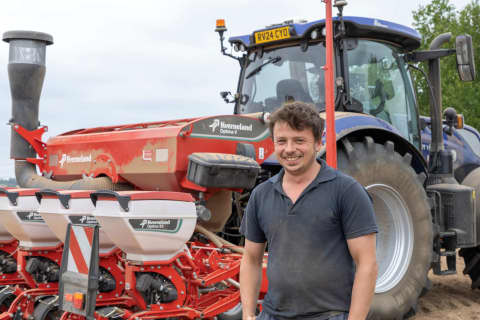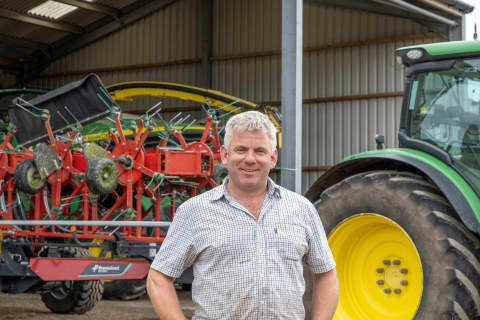“My grandfather always said if we can do the job ourselves, we’ll make the best silage every time,” says Robbie Murdoch, pictured, who farms with his brother William, and parents Robert and Liz.
Mowing 600 acres each season in several cuts, the Murdochs are focused on productivity. Since shifting from a trailed forager to a small self-propelled one, attention has turned to mowing performance. “We’d been running a trailed 4032 moco, then we added a front mounted Kverneland 3632FN mower” explains Robbie. “Going to the 6m mower was great, but the time was right to go wider, so we replaced the 6m 4032 with an 8,7m Kverneland 5087MT butterfly mower conditioner.” Supplied by J&S Montgomery for the 2023 season, the Kverneland 5087MT disc mower uses a pair of eight-disc, 3.2m mower beds with semi-swing steel tine conditioners.
“A lot of folk wonder why we’ve such a big mower on a small dairy farm, but there are two key advantages to going wider,” he says. “The first is that we now drop the grass in less time, so it has more opportunity to wilt before we chop. We prefer not to ted, so we spread as wide as possible using the mower’s hoods.” “And the second advantage is that I don’t have to spend as long mowing – having bigger kit frees up time to do other things, like milking or getting kit ready,” he says. “When silage quality is everything, I’d say many dairy farms would benefit from going as wide as possible.”
Used on a John Deere 6930 tractor, he says one field in particular stands out as proof of better productivity. “I’ve got a 17-acre field that always took me 75-80 minutes with the 6m front/rear combination,” he says. “Now, with the Kverneland 5087MT butterfly mower, it takes just 45-50 minutes. I’m traveling slower but cutting wider, thanks to an extra 3m of mower bed. And there are fewer headland turns because I’m cutting more with each pass.”
“It is a very well-balanced combination that leaves much cleaner stubbles to help regrowth,” he says. “And when it’s not in use, the butterfly folds up neatly for storage.”




